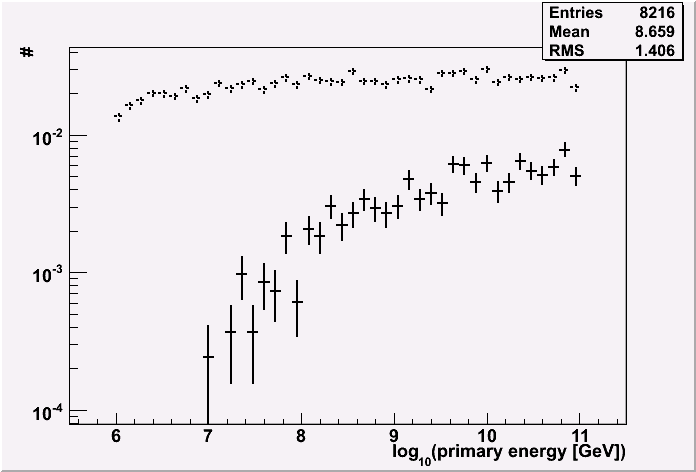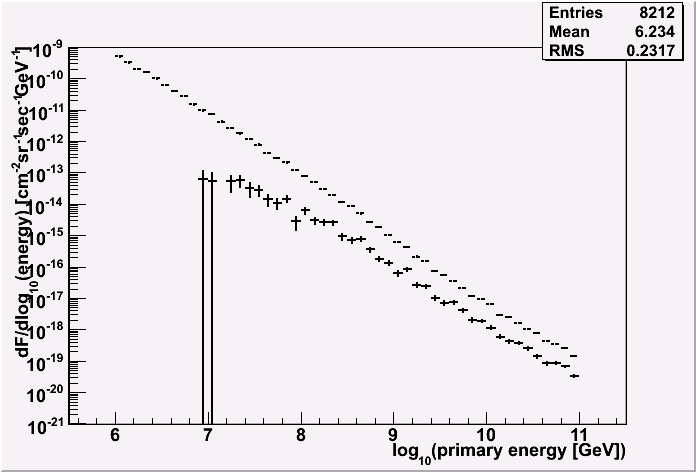|
cos(zenith angle) of the primary particle.
Dot line represents events whose hit DOM number above 80.
(high energy events)
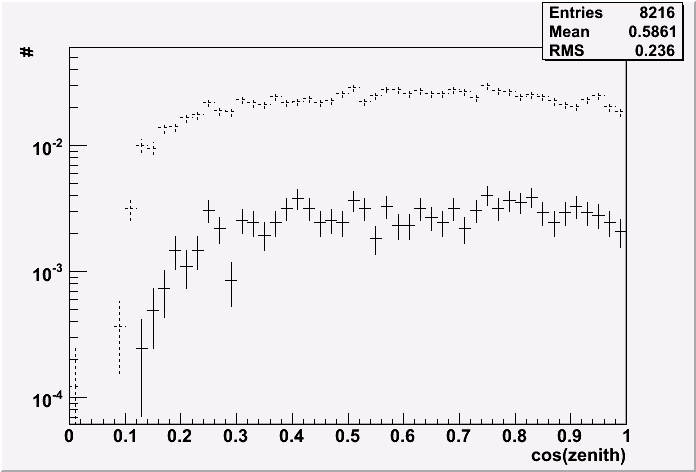
|
cos(zenith angle) of the primary particle weighted by hte CR flux.
Dot line represents events whose hit DOM number above 80.
(high energy events)
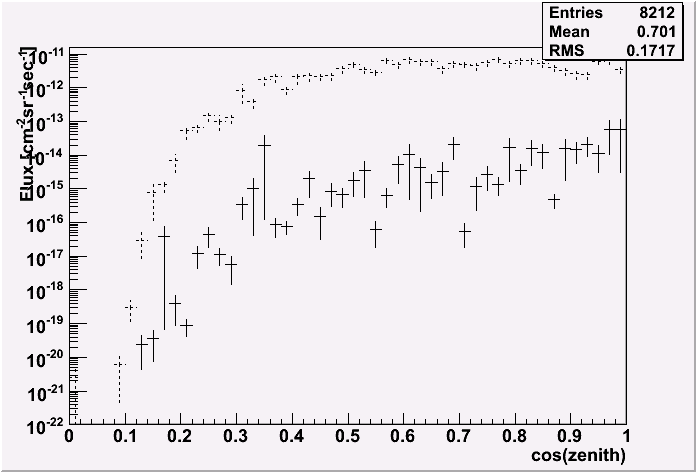
|
azimuth angle of the primary particle.
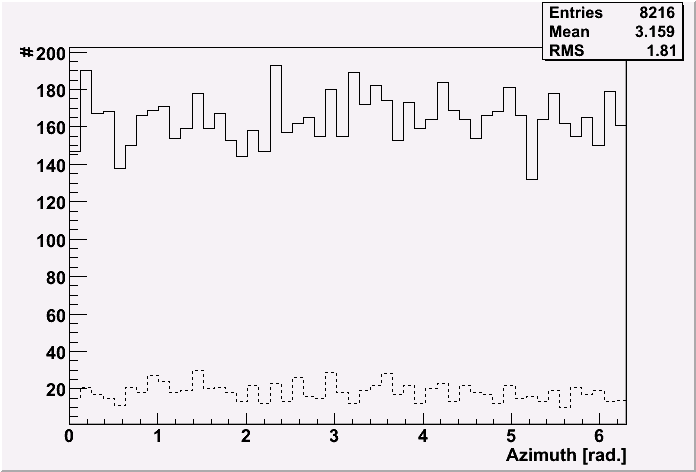
|
|
cos(zenith angle) of the primary particle Vs the energy.
ECUTS thres 1 TeV
larger dots represents events whose hit DOM number above 80.
(high energy events)
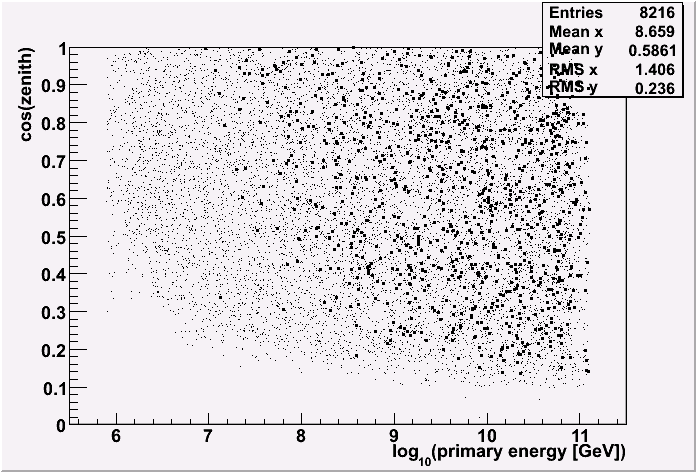
|
|
Multiplicity of muons
ECUTS thres 1 TeV
Dot line: without cut
normal line: with DOM#>80
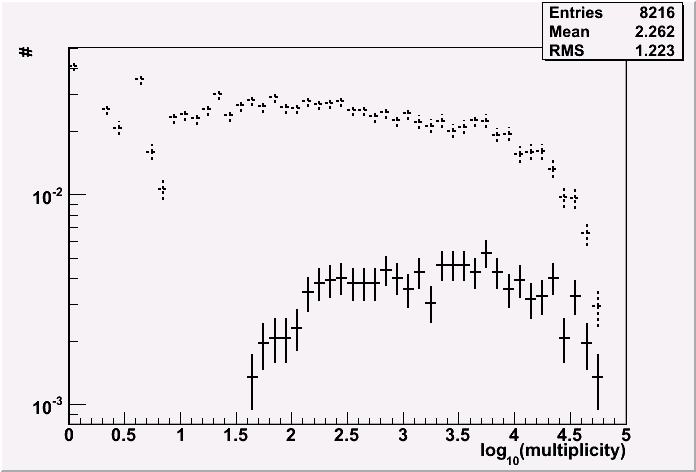
|
Multiplicity Vs primary energy
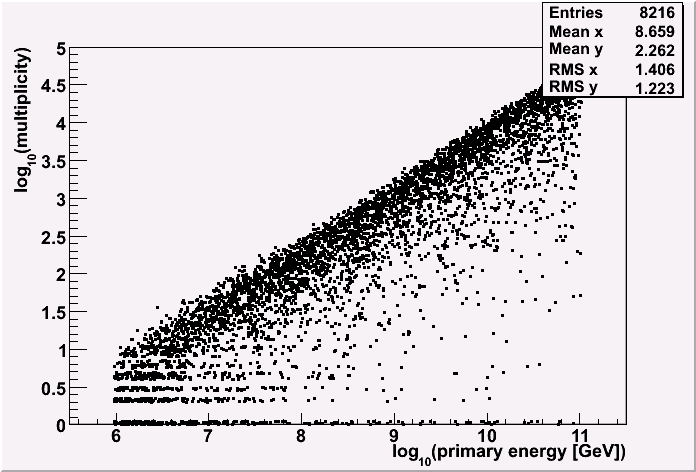
|
|
cos(Zenith angle) Vs Multiplicity of muons
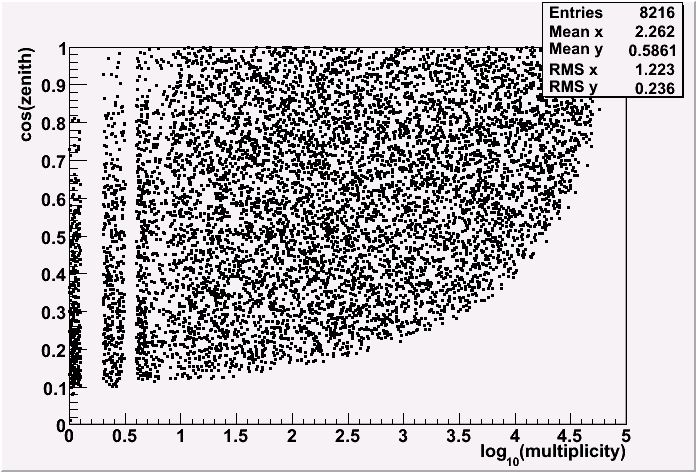
|
Multiplicity of muons weighted by the CR
Dot line: without cut
normal line: with DOM#>80
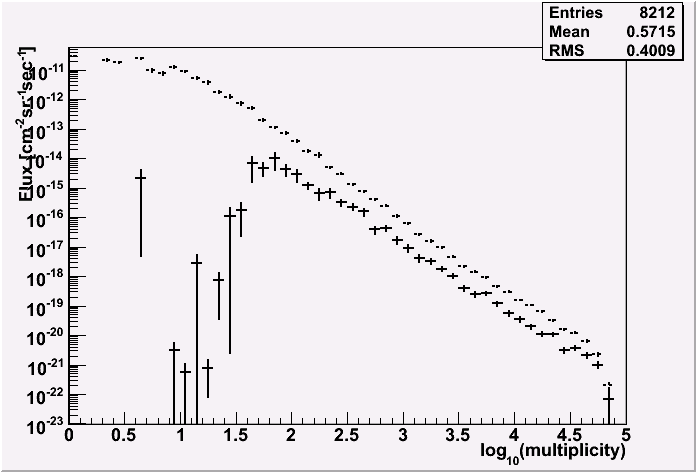
|
|
Energy distribution at IceCube detector (in ice)
Dot line: without cut
normal line: with DOM#>80
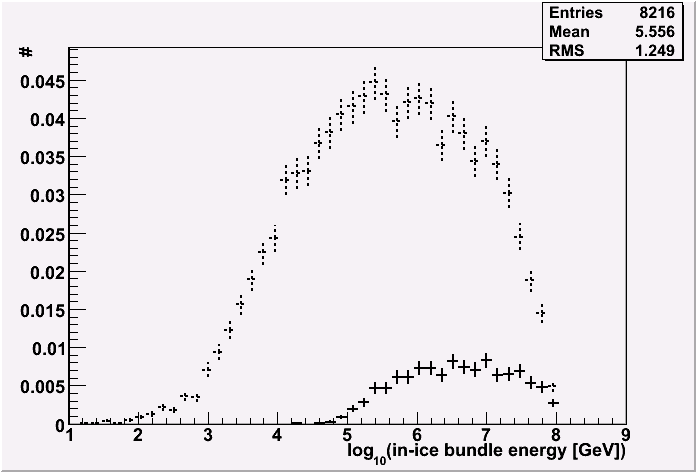
|
Energy distribution at IceCube detector (in ice) weighted by the CR flux
Dot line: without cut
normal line: with DOM#>80
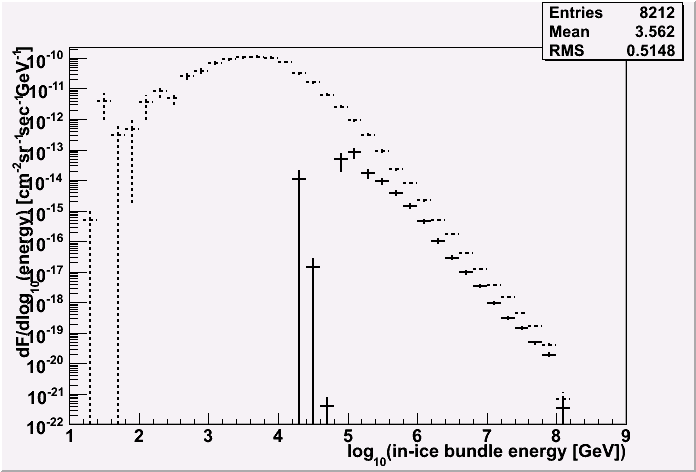
|
|
Energy in ice Vs primary energy
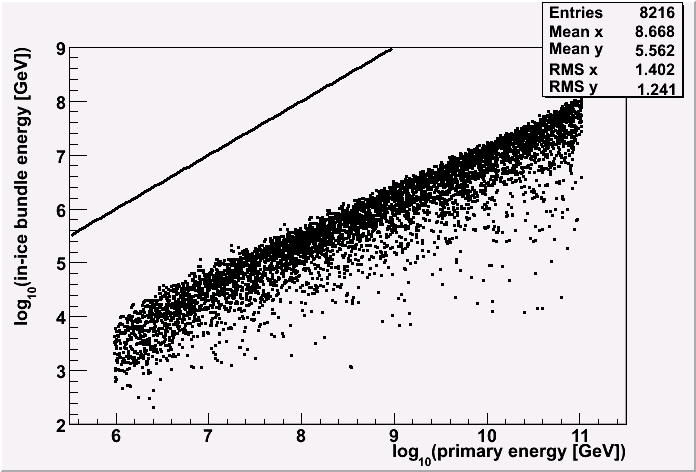
|
cos(zenith angle) Vs energy in ice
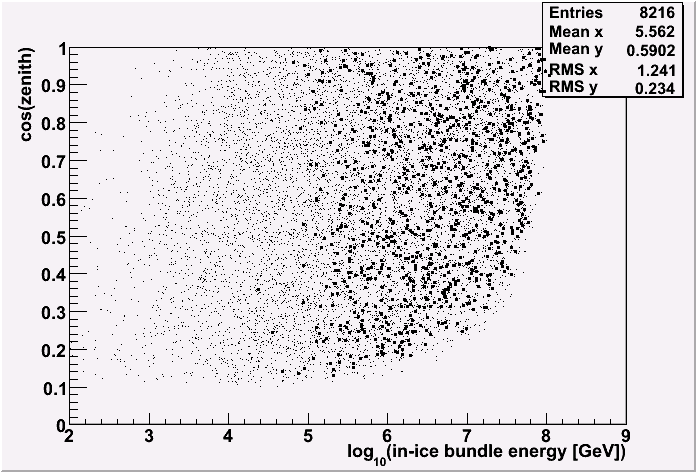
|
|
Energy distribution at surface
ECUTS thres 1 TeV
Dot line: without cut
normal line: with DOM#>80
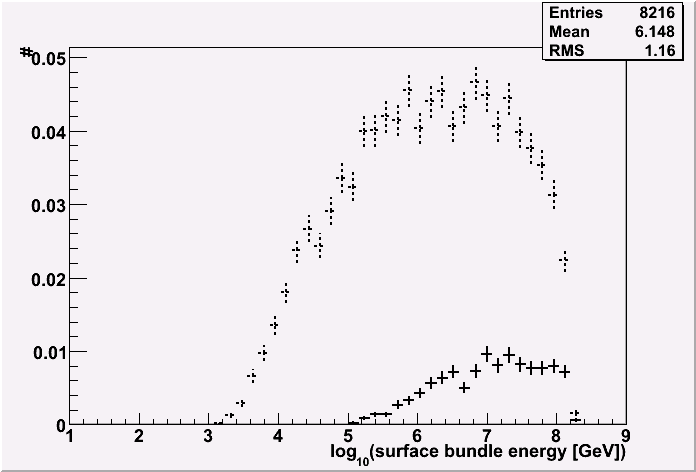
|
Energy distribution at surface weighted by the CR flux
Dot line: without cut
normal line: with DOM#>80
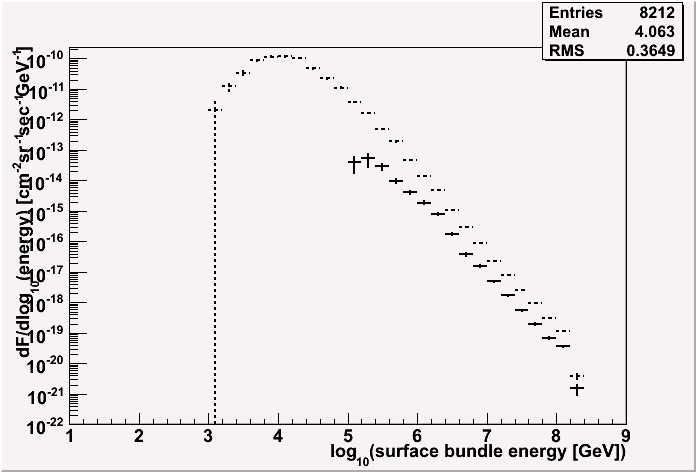
|
|
Energy at surface Vs primary energy
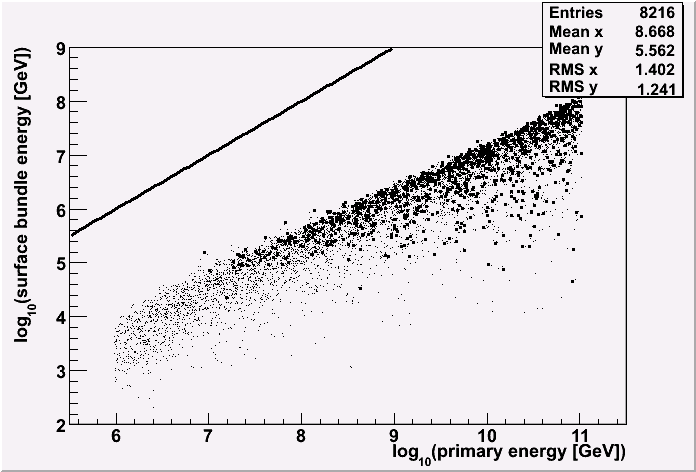
|
Energy at surface Vs energy in ice
The zenith angle dependence
Black: cos(zenith angle) < 0.2
Blue: 0.2 < cos(zenith angle) < 0.4
Red: 0.4 < cos(zenith angle) < 0.6
Magenda: 0.6 < cos(zenith angle)< 0.8
Water: 0.8 < cos(zenith angle) < 1.0
Horizontal particles loose the energy at high energy.
This is probably due to limited simulation volume (880m radius),
but I think this is
fine because those particles beyond the volume will not make so many
photons that can reach our detector, but I will check this more.
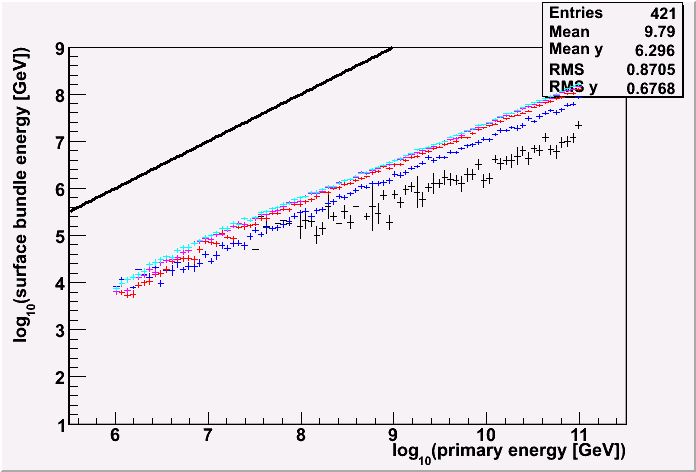
|
|
cos(zenith angle) Vs energy at surface
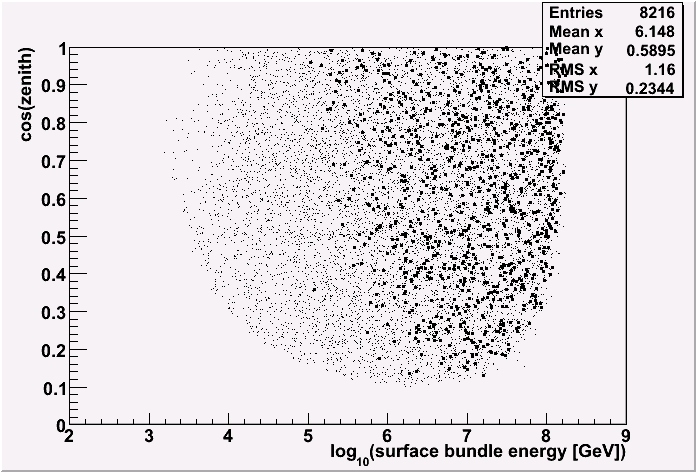
|
|
Energy at surface Vs energy in ice
There is a constant energy loss during the propagation
from surface to the detector (~log10(0.2)~30%)
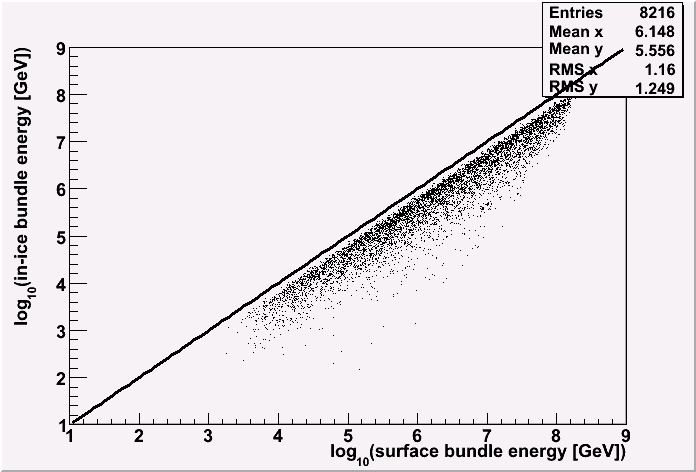
|
Energy at surface Vs energy in ice
The zenith angle dependence
Black: cos(zenith angle) < 0.2
Blue: 0.2 < cos(zenith angle) < 0.4
Red: 0.4 < cos(zenith angle) < 0.6
Magenda: 0.6 < cos(zenith angle)< 0.8
Water: 0.8 < cos(zenith angle) < 1.0
Horizontal particles loose the energy more during the propagation.
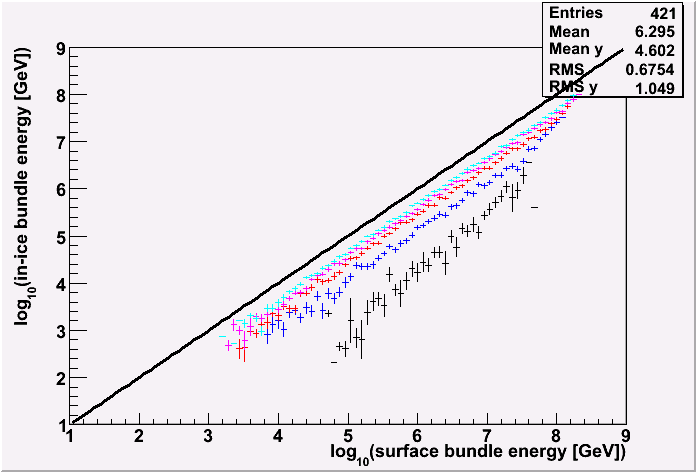
|
|
Npe distribution at IceCube detector (in ice)
ECUTS thres 1 TeV
Dot line: without cut
normal line: with DOM#>80
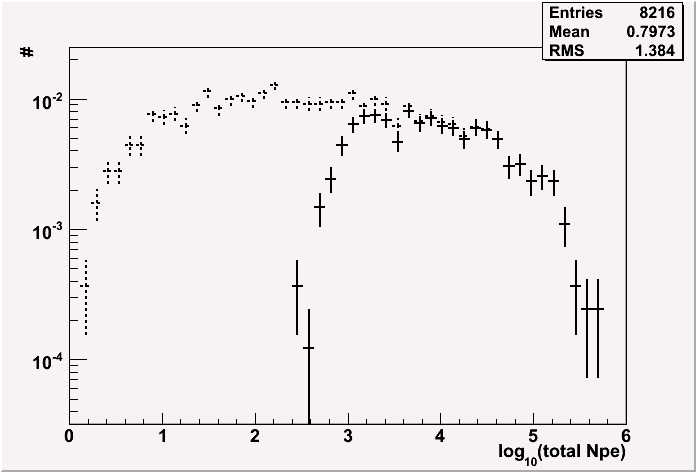
|
Npe distribution at IceCube detector (in ice)
ECUTS thres 1 TeV
Dot line: without cut
normal line: with DOM#>80
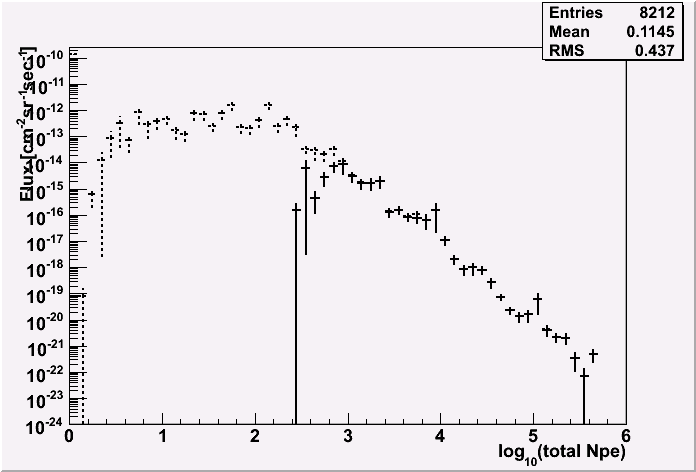
|
|
Npe Vs in-ice bundle energy
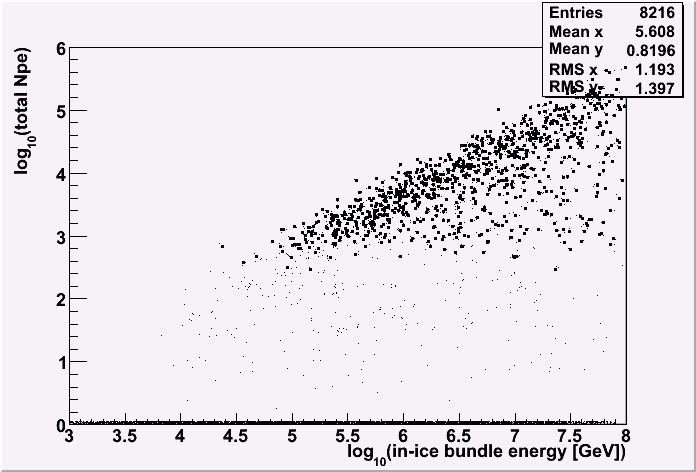
|
Cos(zenith angle) Vs Npe in ice
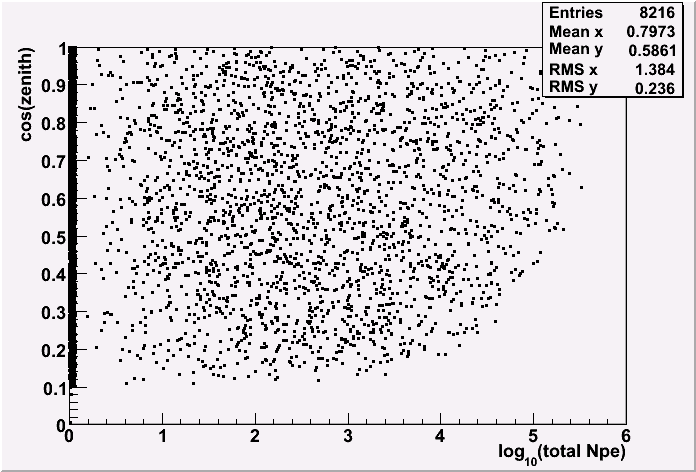
|
|
Cos(zenith angle) Vs Npe in ice
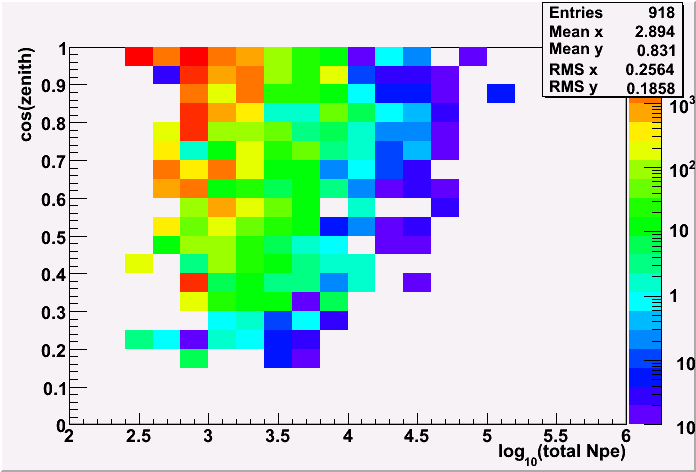
|
